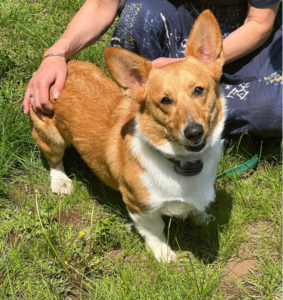Can Hearing Impaired or Deaf Dogs be Trained on a Hidden Fence?
In the United States alone, about 5-10% of dogs are deaf. Chances are that at some point in your life, you may encounter, or perhaps even own, a hard of hearing or deaf dog. Deaf dogs are technically considered disabled; however, because the disability is not physical, it is often overlooked. Being deaf does not mean that your dog’s quality of life will be diminished in any way. Your dog will continue to live a perfectly normal and happy life. In fact, it is best to accept your dog’s limitations sooner rather than later, or you’ll be sounding a lot like a Verizon commercial from the early 2000s.
What causes deafness in dogs?
Just like humans, dogs may be deaf for a variety of reasons. Advanced age often results in diminished hearing. Chronic ear infections may negatively impact a dog’s hearing. Similarly, if a dog experiences a traumatic injury, this may also affect their hearing. On the other hand, some dogs are born deaf due to a genetic defect called congenital deafness. This is the most visually recognizable form of deafness, as it is associated with an all-white, or mostly white, haircoat. This is not to be confused with being albino, which is the complete loss of all pigment. Dogs with congenital deafness do have color in the irises of their eyes, and may even have some color in their haircoat.
Congenital deafness is most commonly experienced in the following dog breeds:
Scooby and Haven are our two most recent Australian Shepherd graduates!
Here is beautiful Lou, our most recent Dalmatian graduate!
This is Jinx, our most recent Great Dane graduate!
Believe it or not, this is Corgi, our most recent Welsh Corgi graduate!
How do I test for deafness in my dog?
There are several simple tests that you may perform in order to test your dog for hearing loss, or deafness. These tests include:
- Rattling your keys
- Squeaking a toy
- Stand behind your dog and clap your hands
- Ring a bell from across the room
- Start singing the, U Can’t Touch This by M.C. Hammer, and see if they immediately leave the room
- Whistle
Will a DogWatch of Litchfield County hidden fence work for my deaf dog?
Our typical system works with an auditory signal, which alerts your dog that he or she is approaching the boundary. For obvious reasons, this is not the best option for pets who are hard of hearing, or deaf. Instead, DogWatch of Litchfield County offers Vibration Receiver Collars. The vibration works as the warning signal for the dog before he or she reaches the hidden wire. This provides both hearing and non-hearing dogs with the same exact benefit of a warning prior to correction. In our experience, deaf dogs catch on to the training just as quickly as hearing dogs. As always, whether your dog can hear or not, the more training they have prior to the installation of a DogWatch of Litchfield County fence, the quicker they will catch on to the new training. Think about how difficult it is to get your children to complete their reading over the summer after a few months off from school… not exactly an easy feat!
DogWatch of Litchfield County also offers a driveway sign that alerts drivers and visitors of a potential loose dog on the property. Deaf dogs cannot hear cars or people approaching them, so this type of warning is especially crucial for our hard of hearing customers. Plus, as someone who has questioned why their car won’t start without their keys in it one too many times, we can all use a gentle reminder to pay a little more attention in life.




